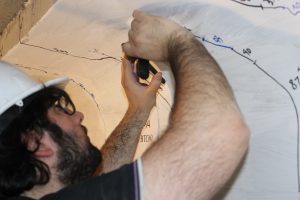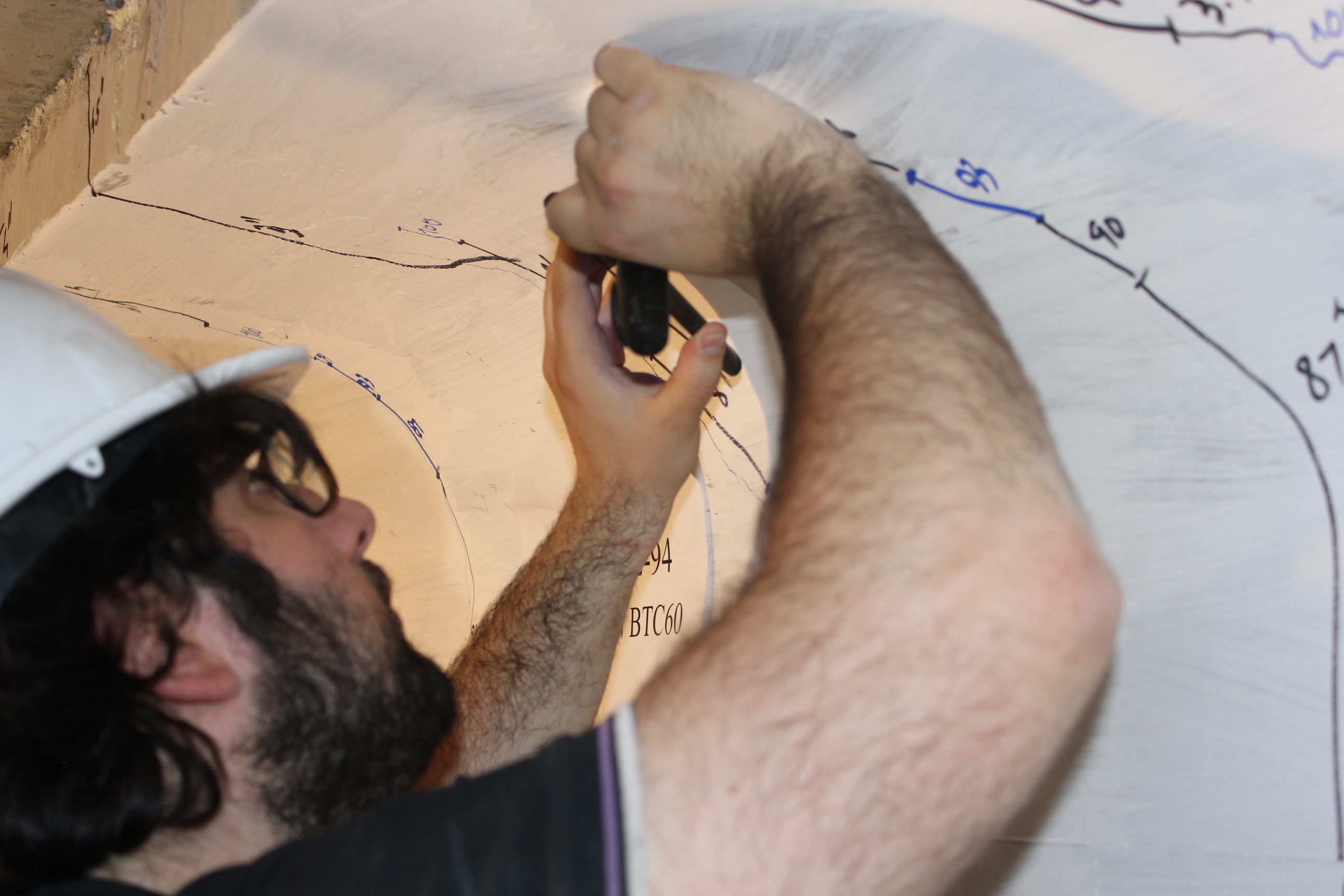Sustainable LED lights increase reliability of tests while reducing energy consumption and creating safer work environment

Picture this: you are in a research lab working on an experiment. The results are crucial to your work. You want be as precise as possible, right?
Recent updates to three different research areas of Town Engineering Building will now directly affect crucial research. This month, Iowa State University’s Department of Civil, Construction and Environmental Engineering (ISU CCEE) installed high-efficiency LED lights in its two high-bay structures laboratories and a third lab area where fabrication of test fixtures takes place.
If you are having trouble visualizing the labs prior to the installation of the LED lights, here is a snapshot as described by Jenny Baker, a senior lecturer in construction engineering and an expert in lighting systems.
“Before the update, the lighting systems in the structures labs were quite poor,” Baker said. “They utilized mercury vapor lamps (or bulbs), which are the oldest type of high-intensity discharge (HID) lighting.”
Baker explained that mercury vapor lights have a number of disadvantages. When compared to newer lighting technology, mercury vapor lights take a long time to turn on to full brightness. They also dim over time and are not so environmentally friendly.
“In addition to the lighting quality, energy efficiency is greatly improved with the new LED lighting fixtures,” Baker said. “The old lighting systems used more than 3 watts per square foot (W/SF) in one structures lab and more than 4.5 W/SF foot in the other. The new LED lighting uses less than 0.5 W/SF.”
A simplified explanation?
“In summary, the new lighting systems are using less than one sixth of the electricity they were before,” Baker said.
The update was made possible in part through ISU’s Live Green! Revolving Loan Fund. The fund, which is one component of the university’s campus-wide sustainability initiative, designated $53,000 for the eco-friendly change. Updating the lighting will reduce Town Engineering Building’s carbon footprint and provide a safer work environment, says Structures Laboratory Manager Doug Wood.

A third component of the lights is increased reliability of test results. Because, when you’re looking for the tiniest hairline cracks, lighting makes a world of difference.
“When we’re running our research tests, we can actually see what is going on with each specimen,” Wood said. “The cracks in the concrete, the details. That’s important to see.”
ISU CCEE contributed $14,000 to the update effort. The investment is worth it. The annual savings from replacing the old lights is estimated at more than $10,000. In five years, Wood says the new lights will end up paying for themselves.
Find out about the latest updates to our department by checking out ISU CCEE’s website, www.ccee.iastate.edu. And make sure to follow ISU CCEE on Facebook, Twitter and LinkedIn (Iowa State University Civil, Construction and Environmental Engineering and ISUConE).
